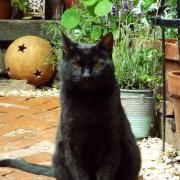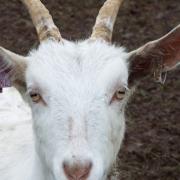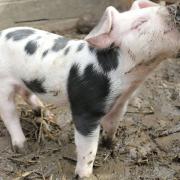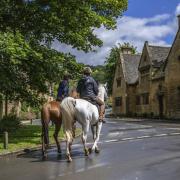The equine condition laminitis is common and frustrating to treat, says Debbie Graham.Veterinary surgeon Jess Hill offers advice on how to spot the symptoms, and what course of action to choose for your pony.
Laminitis is one of the most common causes of lameness among ponies and if left untreated can be fatal. It affects the laminae within the hoof capsule, which - explains veterinary surgeon Jessica Hill of Cheltenham Equine Vets, - “are the attaching mechanism of the bone within the hoof. Laminae are tightly folded structures that increase the surface area of attachment between bone and hoof. The inter-laminar bond is the only means of support of the pedal bone [the hoof-shaped bone in the foot] within the hoof capsule.
“The actual cause of grass-induced laminitis is not fully understood, and there are several theories that are constantly undergoing research. It is thought to be due to a combination of factors stimulated by changes in the bowel, leading to altered blood flow, and exposure of the foot to abnormal toxins.”
However it is triggered, the results are the same, and this vital bond between the bone and hoof is irreversibly weakened. “Ischaemia (loss of blood supply) and destruction of the inter-laminar bonds allows the pedal bone to move downwards within the hoof. It can sink, rotate, or both,” says Jessica.
In particularly severe cases the pedal bone can actually sink through the sole of the horse’s foot, leaving a very poor prognosis with usually only one outcome, euthanasia.
The main cause we are all familiar with is obesity, particularly amongst our native ponies that graze on lush pastures instead of the moors they were designed for.
Other causes can range from steroid drugs to toxaemia, for example toxic metritis, and even trauma. If one limb becomes more weight-bearing because of an injury to the opposing limb it could be compromised, leading to laminitis in that foot.
The hormonal condition Cushing’s disease is also a common cause as “over-secretion of hormones from the pituitary gland leads to high levels of circulating steroids within the bloodstream.”
It can affect all four feet but is mainly seen in the fore feet and whether mild or severe it is important to call the veterinary surgeon out immediately. “Laminitis is an emergency condition and if you suspect laminitis you should phone your vet immediately. Try not to move the horse unnecessarily and if possible put it in a deeply bedded stable while waiting for the vet,” says Jessica. “Some horses that show the signs of acute laminitis will recover completely if treated promptly. However some cases sadly fail to respond despite treatment and are euthanased.”
So what are the signs?
“The affected foot will have a palpable bounding pulse in the digital arteries and sometimes an increased temperature. Some but not all show a laminitic stance – weight leaning backwards in order to try to ease the foot pain. The horse is usually reluctant to move, with a pottery gait landing heel first.”
Although primary treatment includes anti-inflammatory drugs for pain relief, the most important thing is to get the patient confined to a stable with a deep bed straight away.
Your veterinary surgeon may also advise dietary changes that must be followed religiously. If obesity has been the cause it is important, however tempting, not to make radical changes without expert advice as this can cause other problems, like the often fatal hyperlipaemia. Here the body, in reaction to the perceived enforced starvation, releases excess fatty deposits in the circulation to try and provide food for the vital organs.
X-rays may also be taken of the affected feet to see whether any rotation of the pedal bone has occurred. This will give the veterinary surgeon an idea of prognosis and whether other treatments, from specialised foot trimming to supportive shoes, are appropriate.
But even when the patient recovers it is not over as there are always long-term implications and the patient will remain prone to the disease for the rest of their life.
Jessica warns; “Once a horse or pony has suffered from laminitis, its owner needs to be vigilant about keeping its weight under control, with regular and correct foot trimming to maintain the correct position of the pedal bone because chronic changes to the microstructure of the hoof are likely to lead to chronic abnormalities.”
Prevention is therefore better than cure and Jessica’s first tip is for those overweight natives; yes it’s time for weightwatchers.
“Avoid obesity with regular exercise (not if laminitis present) and diet control. The horse or pony should be regularly condition scored and weigh-taped to allow monitoring of the weight. Grazing muzzles are useful to limit grass intake,” says Jessica.
Other tips are; avoid concussion, steroids, and in the case of a long-term injury, like a fracture “apply a supporting shoe to the contra-lateral limb.”
If you are concerned at all, speak with your own veterinary surgeon or visit www.laminitis.org
























